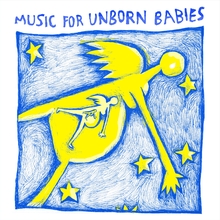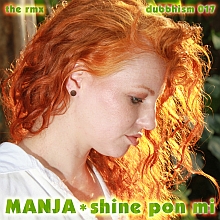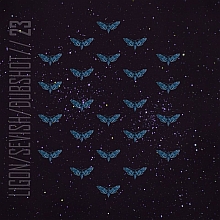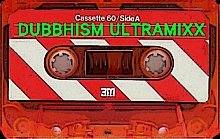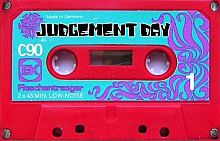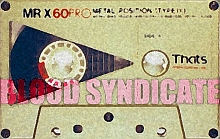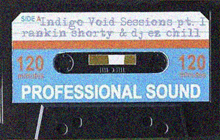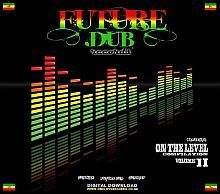
The movements of the stars, the planets and even the asteroids are of great interest to astrologers. To most stargazers, a piece of space-rock becomes more useful when it has been named. The name connects the physical object to the realm of meaning; an important starting point for astrological interpretation. But that's not the whole story. Many names of astronomical objects are in fact deeply weird.
Before we get into the crazy part, you could check out what the International Astronomical Union (IAU) has to say about the naming of astronomical objects if you are unfamiliar with this subject.
What's so special about asteroid names?
Asteroids are probably the most interesting group of astronomical objects when it comes to the naming process. One reason is that there are lots of asteroids. And because of the security risks associated with asteroids, we want to know every last one of them.
As of 2018, the Minor Planet Center has documented some 750.000 minor planets, of which over 500.000 have orbits known well enough to be assigned permanent official numbers. Of these, more than 21.000 have been named officially according to IAU rules. This means that right now, everybody who is born on Earth has over 21.000 named asteroids in their birth chart. The number keeps growing; adding more astrological detail so to speak.
This flood of new astrological variables is perhaps a bit of a mixed blessing. Many astrologers are overwhelmed by it, because it seems difficult to filter out the noise and keep the relevant bits of meaning. But there's also good news: many asteroids have relatively unambiguous names. You don't have to dive too deep into the complex art of astrological interpretation if you're searching for ~ say ~ synchronistic events related to asteroids 128036 Rafael Nadal and 230975 Roger Federer. You just look at their tennis matches, et voila.
The planets are all named after mythological figures, but lots of asteroids are named after cities, countries, rivers, mountains, scientists, musicians and so on. These more objective names can point to simple synchronicities ~ when compared to more complex events associated with the movements of planets ~ and sometimes they can point to specific events and situations with more precision than the planets could. For example, we might want to check out the exact location of asteroid 173032 Mingus on the 20th of January 1963. Because on that day jazz giant Charles Mingus recorded his masterpiece The Black Saint and the Sinner Lady: a creative peak and a candidate for astrological synchronicity.

Synchronicity
Most astrologers would agree that the exact moment when an astronomical object is discovered carries meaning. The discovery and subsequent naming of an object are thought to be synchronistic processes. Astrologers assume that careful analysis of the moment of discovery can provide useful details for correct interpretation of events related to the new object. The same thing is also true for the outer planets. Uranus, Neptune and (dwarf planet) Pluto were discovered relatively recently, at a moment in time that seems to reflect bits and pieces of their complex astrological meaning.
Synchronicity as a concept was coined by Carl Jung, and he made a mess of it. For a better understanding of various subtle forms of causality in relation to synchronicity, the talk by Richard Tarnas below is highly recommended. Tarnas describes 'proper' synchronicity as having a quality of "the whole communicating with the part". Another key aspect of synchronicity is that the amount and/or intensity of synchronistic events increases in times of crisis and transformation, both on the individual and the collective level. By the way: Pluto is also linked to crisis and transformation. The 'influence' of the little dwarf planet is said to be relatively strong.
Since synchronistic events seem to occur more often in crisis-like situations, designing a statistical model that does justice to this dynamic is not straightforward. It's easier to analyze extreme cases; obvious moments of crisis and transformation. Birth and rebirth are good examples. Personal breakthroughs, creative peaks, political crises, wars and so on are potentially highly synchronistic.

Activation of asteroids
The Sun and Moon and the planets, from Mercury to Pluto, provide relevant information in every birth chart, although they're not necessarily equally important. This doesn't seem true for asteroids. Only some of them seem to be 'activated' in a certain chart. So how to find those active ones? Asteroids are thought to be activated most strongly by conjunctions with the Sun, the Moon, and perhaps a bit less by conjunctions with the planets. Aspects like opposition, trine, square etc. and contacts with other small bodies can also be valid. Aspects must have an accuracy of 1° or less.
Having said that, every chart has lots of asteroids conjunct natal Sun, Moon and planets that would seem unimportant or irrelevant. For some reason they don't seem to be activated, or perhaps not active enough to get noticed. That's why spotting an active asteroid may require a bit of a poetic eye.

6735 Mad Hatter, a fictional character from Lewis Carroll's story Alice in Wonderland, has a prominent place in the birth chart of style icon miss Grace Jones, conjunct her natal Sun (0°04).
Asteroid names from the future
For strictly rational people synchronistic events can seem spooky. But it gets worse. Asteroids have a unique way of messing with our ideas of time and causality: the naming process seems to have a retroactive aspect. Let's say an asteroid is discovered and named in the 21st century. That doesn't mean you can't find remarkable synchronicities that happened 200 or even 2000 years before the asteroid was named, created in the future by the IAU so to speak.

Below some examples are given to demonstrate the retroactive effect of asteroid names. So how can we make sense of this? Perhaps a simple solution is to think about time as both simultaneous and sequential. If you don't like that, you're invited to check the motto of this blog (top of the page) and meditate on it for a little while.

Historic synchronicities involving asteroids
For astrological research the exact time and place of an event are required. The further we go back in time, the harder it becomes to find exact dates and places. But even in the period before Christ, there are a number of well-preserved events that seem to resonate conspicuously with certain asteroids. Take the Second Punic War. A time of crisis and transformation for the Roman Republic and Carthage. Asteroid 2152 Hannibal is a candidate for synchronicities, discovered on 19 November 1978.
The Battle of the Trebia is the first major confrontation between Rome and Hannibal's army in the 2nd Punic War. On the day of the battle Uranus is conjunct asteroid Hannibal (0°07). The basic meaning of Uranus is sudden change. The Roman army loses 30.000 men: the largest defeat since the war against the Gauls 125 years earlier. The Romans don't know what hit them.
The Battle of Cannae was the bloodiest battle in the 2nd Punic War. It’s even one of the bloodiest battles in all the history of war. Some 70.000 Roman soldiers died in a matter of hours. A classic argument against astrology comes from Cicero (9446 Cicero), the Roman philosopher and politician who lived in the time of Julius Caesar. In De Divinatione he wrote "Did all the Romans who fell at Cannae have the same horoscope? Yet all had one and the same end."
Since Cicero's argument is a classic, let's mention a synchronicity involving Pholus. This asteroid gets its name from Greek mythology. The thing to remember about the Pholus from the myth is that he causes a mass murder. At high noon on August 2nd 216 BC, when the slaughter at Cannae begins, the Sun is exactly conjunct asteroid Pholus (0°01) which was discovered on the 9th of January 1992.
Death of emperor Claudius
Moving ahead in time but staying in Rome, emperor Claudius is also a candidate for asteroid weirdness. His personal asteroid is 7117 Claudius. It is known that Claudius died on the 13th of October 54 AD of poisoning. What was the sky saying during his last hours?
Karma sesquiquadrate Claudius ~ fateful time or event (0°22)
Damocles biquintile Claudius ~ doom hanging overhead (0°24)
Tantalus biquintile Claudius ~ some form of torture (0°38)
Pluto biquintile Claudius ~ death, transformation (0°47)
Asteroid 7117 Claudius was discovered on 14 February 1988.

The Vatican
After the Roman empire collapsed it was more or less replaced by the Roman Catholic Church in Western Europe. Asteroid 416 Vaticana, discovered on 4 May 1896, is one of the asteroids linked to this church. Only a few persons connected to the Catholic church have personal asteroids. For example the mystics Hildegard of Bingen, Meister Eckhart and Mechthild of Magdeburg, Saint Augustine and Saint Ignatius of Loyola; the reformer Martin Luther and Pope Benedict XVI (Joseph Alois Ratzinger). 8661 Ratzinger is interesting, and 898 Hildegard is a candidate for synchronicities, since Ratzinger promoted this fine lady from ordinary saint to Doctor of the Church. Furthermore, Ratzinger got his asteroid name for the role he played in supervising the opening of Vatican archives to researchers investigating judicial errors against Galileo and other medieval scientists. This draws attention to asteroid 697 Galilea.
First of all Ratzinger has his own asteroid 8661 Ratzinger conjunct Mercury (1°02) in his chart, creating a strange 'feedback loop' in his head. Here are some more aspects from his natal chart:
Galilea trine North Node (0°22)
Galilea sextile South Node (0°22)
Ratzinger sesquiquadrate Martin Luther (0°17)
Vaticana biquintile Hildegard (0°5)
Vaticana opposite Dejanira (0°29)
Asteroid 157 Dejanira can be an indicator of sexual abuse of children. Ratzinger is known for his efforts to fight sexual abuse in the church.

Musical synchronicity
The Black Saint and the Sinner Lady is an album/composition by Charles Mingus. The liner notes were written by the composer and his shrink. The album is considered a masterpiece. It was recorded in New York on the 20th of January, 1963. On this day the Sun was conjunct Mercury; at noon the conjunction was exact. Furthermore asteroid 173032 Mingus was conjunct Sun and Mercury (0°98). Sun conjunct Mercury is an aspect linked to mental illness (a fried mind) but when it's exact it can bestow genius and brilliance. Asteroid Mingus was discovered on August 25th 2006.
Proverbial crossings
Asteroids can be related in various ways. Take 18458 Caesar, discovered 5th of March 1995, and 11302 Rubicon, discovered January 27th 1993. On 10 January 49 BC Julius Caesar, the first Roman emperor, crossed the Rubicon while dropping the famous slogan "alea iacta est". Symbolically, crossing a river is like a conjunction. So what happens when asteroid Caesar crosses asteroid Rubicon in the sky? We notice quite a few changes of leadership, the beginning or ends of conflicts, and news related to exiles and the crossing of waters. Probably the most remarkable events coinciding with Caesar crossing the Rubicon in the 20th century are the end of World War II and the end of the Vietnam War. To get an idea, here's a selection of news in recent periods when asteroid Caesar crossed asteroid Rubicon:
8.09.1945 - 13.09.1945
- Japanese in South Korea, Taiwan, China and Indochina surrender to the Allies. The surrender of Imperial Japan was formally signed on September 2, ending the hostilities of World War II.
- Dominican exiles, aided by Fidel Castro, invade the Dominican Republic on three fronts, with the objective of overthrowing dictator Rafael Leónidas Trujillo. Most rebels row in from ships stationed offshore.
- François Tombalbaye becomes Prime Minister of Chad, which is scheduled to become independent of French Equatorial Africa. On August 10 1960, Tombalbaye becomes the new Republic of Chad's first President.
- Seán Lemass takes office as Taoiseach of Ireland following elections to replace Éamon de Valera and begins a course of pursuing peaceful cooperation, rather than unification, with Northern Ireland.
- Voters in Hawaii go to the polls on the question of whether to become the 50th state of the United States.
- After more than 20 years of self-imposed exile, Charlie Chaplin returns to the United States for the Academy Awards.
- The Paris Peace Talks are suspended indefinitely after the United States and South Vietnam pull out because of "lack of progress". The Operation Linebacker bombing and mining campaign against North Vietnam begins.
- An uprising in Burundi by the Hutu people against the Tutsi dominated government begins with machete attacks that kill more than 3,000 Tutsi civilians and soldiers. The Hutu rebels set up their own short-lived "People's Republic of Martyazo" at the Bururi Province. The Tutsi-dominated Burundian Army ends the secession movement within two weeks, before beginning the slaughter of thousands of Hutus.
- In Vietnam, Operation Linebacker II, described more generally as the Christmas Bombing begins.
- U.S. President Richard Nixon is inaugurated for his second term.
- U.S. involvement in the Vietnam War ends with the signing of the Paris Peace Accords.
- In elections in Australia, the Australian Labor Party (ALP) wins 67 of the 125 seats in the House of Representatives, to take control of the government from the coalition of the Liberal Party (headed by Prime Minister William McMahon) and the Country Party.
- Following a referendum in the Philippines, the Constitution proposed by the Constitutional Convention of 1971 is ratified: Marcos becomes president for life.
- Ramón Ernesto Cruz, who had been elected President of Honduras in 1971, is overthrown in a coup led by the Army. General Oswaldo López Arellano, who had handed power over to Cruz following the election, returns to office as President.
- A boatload with 65 Haitian refugees, mostly black, lands in Florida, the first "boat people" to flee from Haiti to the United States.
- George Foreman defeats Joe Frazier to win the heavyweight world boxing championship.

Fact, fiction or confusion?
Decapitation scores high in terms of personal crisis and transformation because it's always fatal. Perhaps that's the reason why asteroid 17518 Red Queen (discovered on 18 December 1992) can be spotted relatively easy in birth charts of people who lose their head. But wait. The Red Queen is a fictional character from Alice in Wonderland, or was it Through the Looking Glass? The Red Queen is often confused, or 'mixed' with the Queen of Hearts. At least by Hollywood. But there is no asteroid named Queen of Hearts. There's only 17518 Red Queen. It points to 'losing one's head' as in decapitation, or irrational behavior/loss of self-control.

You probably don't remember who Marinus van der Lubbe was. He died on the guillotine on the 10th of january 1934 after having been sentenced to death in a Nazi show trial. On the 27st of february 1933, Van der Lubbe had set the German Reichstag on fire, causing unprecedented political turmoil and 'establishing' Nazi Germany.
Marinus van de Lubbe, born on 13 January 1909 at 05:30 in Leiden, Netherlands (52n10, 4e30) rating AA
Generally speaking, important asteroids in Van der Lubbe's chart are Karma, Moira (fate), Bratfest (young rebel), Pandora (political after-effects of the fire), Hybris (challenging the Gods), Socrates and Justitia (show trial), Red Queen (off with his head), Atropos (death/the end) and Aeternitas (eternal fame). Here are some Red Queen aspects in Van der Lubbe's birth chart:
Red Queen biquintile Pluto (0°35)
Red Queen trine Justitia (0°36)
Red Queen biquintile North Node (0°40)
Red Queen sesquiquadrate Saturn (0°42)
And some Red Queen transits on the day of his execution:
Leviathan sextile Red Queen (0°17)
Sun sextile Red Queen (0°19)
Nodes square Red Queen (0°27)
Red Queen quintile Neptune (0°13)
Red Queen semisquare Hybris (0°14)
Red Queen biquintile Chiron (0°36)

The French Revolution
Marie Antoinette, born on 2 November 1755 at 19:30 in Vienna, Austria (48n13, 16e20) rating A
The most important aspect in Queen Consort Marie Antoinette's birth chart is her Sun-Venus conjunction and Red Queen is in the middle of it, next to 7887 Bratfest. Her husband's case is only a little less obvious.
Louis XVI, born on 23 August 1754 at 06:26 in Versailles, France (48n48, 2e08) rating A
Red Queen transits on the day of his execution (with Chiron conjunct Red Queen in the sky, 0°17)
Damocles opposite Red Queen ~ waiting for execution (0°16)
Pax sextile Red Queen ~ execution brings peace of mind (0°17)
Red Queen quintile North Node ~ fateful event, destiny (0°53)
Red Queen sesquiquadrate Pluto ~ death by decapitation (0°9)

Jihadi John
Jihadi John (Mohammed Emwazi) can be seen in videos (2014, 2015) by Islamic extremist group ISIL showing the beheading of captives. Jihadi John was born on 17 August 1988 in Kuwait. Red Queen is almost exactly conjunct his Venus: he was into decapitation. His victims also have notable Red Queens in their charts.

Friedrich Nietzsche, born 15 October 1844 at 10:00 in Röcken, Germany (51n14, 12e07) rating B
Losing one's marbles
On January 3rd 1889, while staying with a friend in Turin, poor old Friedrich Nietzsche suffered an epic mental collapse. Seven years before he lost his head he famously wrote:
The madman jumped into their midst and pierced them with his eyes. “Whither is God?” he cried; “I will tell you. We have killed him - you and I.”
In Nietzsche's birth chart Red Queen is conjunct Mercury (0°08), the planet of communication, thought and other mental functions. Asteroid 7014 Nietzsche is trining asteroids Sisiphus (endless task, persistence, refusal to admit or accept defeat, 0°31) and Aeternitas (eternal fame, 0°38), squaring Atropos (death, transformation 0°52) and semi-squaring Hybris (challenging the Gods 0°70). Asteroid 7014 Nietzsche was discovered on April 4, 1989. Here are some of Friedrich Nietzsche's natal transits on January 3rd 1889:
Red Queen trine Mars (0°39)
Red Queen semisquare Pax (0°56)
Saturn semisquare Red Queen (0°24)
Pluto trine Red Queen (0°34)
Nietzsche sextile Saturn (0°47)
Nietzsche trine Karma (0°56)
Nietzsche square Icarus (0°57)
North Node trine Nietzsche (0°39)
South Node sextile Nietzsche (0°39)
Atropos square Nietzsche (0°47)
Pandora trine Nietzsche (0°57)
Now go ahead and try it yourself:
Mary, Queen of Scots, born on 18 December 1542 at 13:12 in Linlithgow, Scotland (55n59, 3w37) rating C

Close enough
Lee 'Scratch' Perry, the famous Jamaican producer, musician and self-proclaimed madman was born on the 20th of March 1936 in Kendal, Jamaica. He has asteroid 18124 Lee Perry conjunct Mercury in his birth chart (0°8) creating a funny loop in his brain, the same situation as with the Pope (fun fact: Lee Perry actually dressed up like a Pope). The asteroid was discovered on 3 July 2000, long after The Upsetter was born. But wait. This is too easy. Could it be that somebody has been cheating? Perhaps a Lee Perry fan or a crazy IAU employee?
We can't be sure but somehow it seems unlikely. Asteroid 18124 Lee Perry wasn't named after Pipecock Jackson. It was named after young Lee Taylor Perry, official ISEF awardee in 2003. Furthermore, it doesn't seem appropriate for the IAU to promote 'belief' in astrology using fraudulent methods. Only hardcore conspiracy theory addicts would fall for that. Synchronicity seems to be the culprit again.
It's another fine mess the Universe has got us into. It seems as if names of asteroids shouldn't always be taken literally. Sometimes there is a bit of poetic license. First of all, the spelling doesn't have to be correct. Take for example asteroid 3778 Regge. It was named after the Italian theoretical physicist Tullio Regge. Try to guess what style of music it can point to in the astrological realm. Of course, reggae music is quite unrelated to theoretical physics. In other words: the original meaning of the name doesn't always matter either. This is interesting, because there are quite a few scientists with unscientific souding last names who had an asteroid named after them, like Beer, Bragg, Lie and Swindle.

Donald Trump, born 14 June 1946 at 10:54 in New York (40n42, 73w4859) rating AA
Born to swindle
Asteroid 6890 Swindle has a prominent place in the birth chart of Donald Trump, the famous casino owner, real estate developer, reality show host and highly profitable asset of the Russian mafia. Here are some of his birth chart aspects:
Swindle quintile Mercury ~ swindle on the brain (0°22)
Swindle trine Fama ~ famous swindler (0°26)
Swindle square Nodes ~ born to swindle (0°6)
Winer semisquare Icarus ~ whining may cause a downfall (0°18)
Winer semisquare Justitia ~ very unfair! (0°18)
Bragg square Ohno ~ oh no, he's bragging again (0°12)
Bragg square Neptune ~ brag to confuse, confused bragging (0°30)
Bragg square Sphinx ~ brag about secrets, to hide something (0°41)
Bragg semisquare Icarus ~ bragging may cause a downfall (0°52)
Bragg trine Myrrha ~ brag about sexual relationships that go against ‘natural law’ (0°58)
Bragg sesquiquadrate Fama ~ famous bragger (0°8)
Sphinx opposite Neptune ~ trying to keep certain things secret (0°11)
Sphinx semisquare Fama ~ both famous and mysterious (0°33)
Icarus square Fama ~ fame may cause a downfall (0°52)
Veritas sesquiquadrate Nemesis ~ truth may cause a downfall (0°13)
Veritas trine Pax ~ truth brings peace of mind (0°13)
Justitia trine Uranus ~ sudden unexpected justice (0°46)
Mexico conjunct Mercury ~ Mexico on the brain (0°03)
Musical intermezzo
Big wheel keeps on turning,
Proud Mary keeps on burning,
Rolling, rolling, rolling on the river,
Rolling, rolling, rolling on the river.
Reflection
In recent years, the whole of the night sky has once again revealed itself to astrologers as an open Book of Nature and a point of entry into the Divine Mind. Just like it was in ancient times, but this time with more precision and detail, powered by space tech and AI. 21st century astrology is all about expansion into new territories like asteroids, black holes and big data. There is no bigger data than the Cosmos, and AI is probably one of the most important techniques for future astrological research.
Meanwhile, we have to remain cautious when interpreting names given to new objects. For example, Richard Tarnas has pointed out in the case of Uranus that we can't follow name-synchronicity blindly.

Astrological time
Jungian synchronicity is a baffling concept in the (post)modern era. In textbook cases like the one of the golden scarab beetle it is as if the 'holy' borderline between skull and outside world is violated. The whole of nature seems to know a lot more about the person confronted with the synchronicity than we would expect. Nature can speak directly to us ~ as in a living dream. If we take this stuff serious it challenges most philosophical positions that are currently popular. Jung knew this. Like ESP, synchronicity will not be accepted by the scientific community until there's a paradigmatic shift towards idealism. The retroactive effect of asteroid names is just as baffling. It's a violation of common sense ideas of cause and effect. And it's quite possible that a Universe that does these kinds of things is a teleological Universe ~ another unpopular notion.


The astrologer as art critic
Perhaps we should look at it the way an art critic looks at a 'difficult' piece of art. Keeping in mind Susan Sontag's wonderful dismissal of art critics here's how this might work.
Imagine hearing on the news that 70.000 people have died in one afternoon. You might think Donald Trump has started a nuclear war.


Going back to the battlefield, or actually the slaughterhouse of Cannae where Hannibal's army killed 70.000 Romans in one hot summer afternoon in August 216 BC, there is nothing about this event that reminds us of beauty or art. But the conjunction of the Sun and Pholus does give meaning to it in a way that only astrology can. If Cicero had been right and the battle had been meaningless from an astrological viewpoint that wouldn't really make things easier.
Let's approach this the same way a (good) art critic approaches the famously horrible Disasters of War scenes by Goya: by not looking away. The darkest moments of history are often accompanied by an eerie kind of celestial harmony. Elaborating on the Cannae-conjunction or Friedrich Nietzsche's Mercury-Red Queen conjunction is not about celestial disaster tourism. It's about encountering the dark side of Creation and shaking Pluto's hand without looking away.


